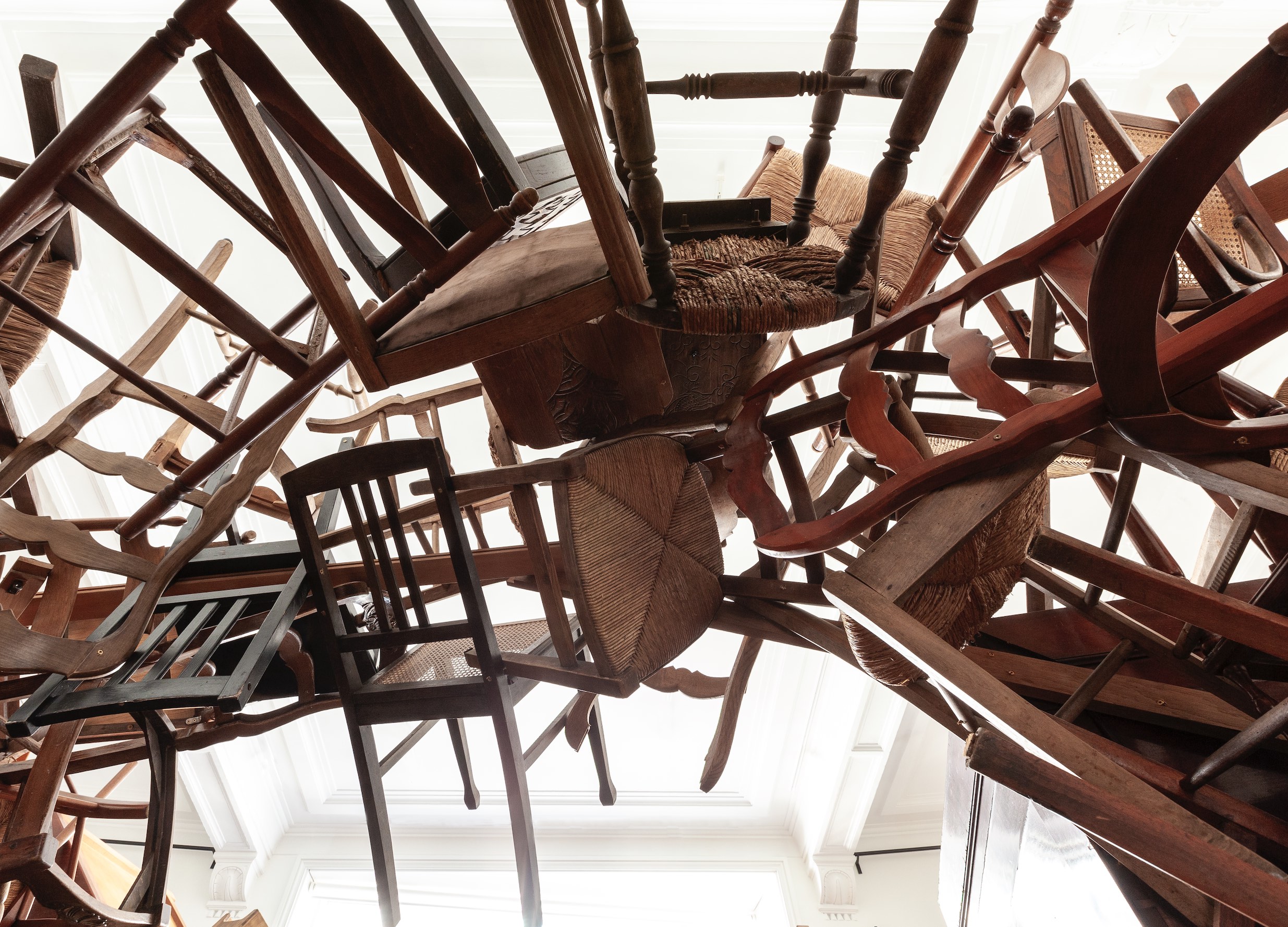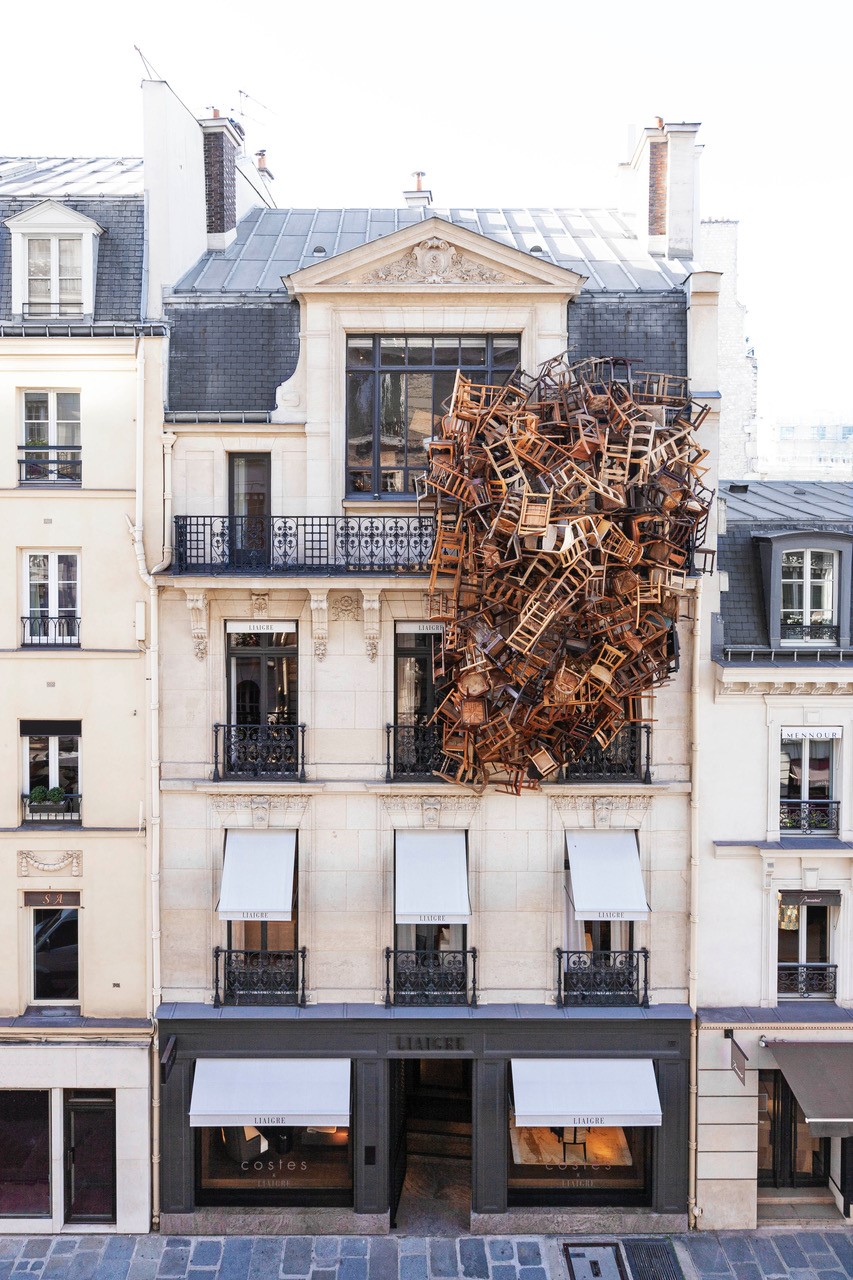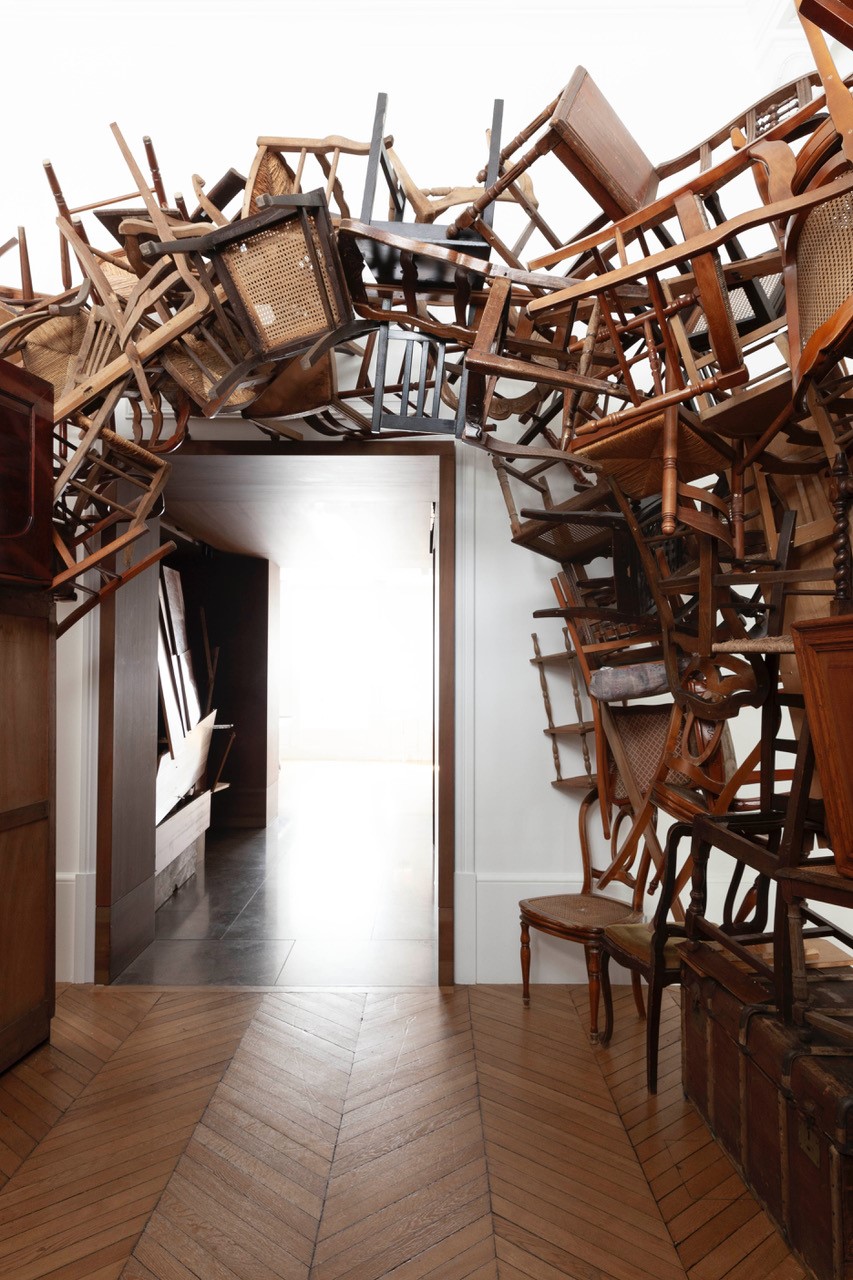For Nest in Liaigre, Tadashi Kawamata creates a large nest by weaving wooden planks made from reclaimed furniture, further cementing Liaigre’s unique relationship with art, interiors and architecture
 Photography courtesy of Liaigre
Photography courtesy of Liaigre
Words by Joe Lloyd
The Liaigre atelier on Paris’ Rue du Faubourg Saint-Honoré is a historic mansion that shines among that road’s elegant limestone facades. But if you visit this autumn, you will find the design and interior architecture brand’s home has grown a protrusion.
Dozens of wooden chairs are spilling from the windows of its upper floor, like a giant bird’s nest speckled with eye-catching shapes and forms. This profusion of chairs continues inside the mansion. Antique chairs, tables and chests of drawers divide rooms, pile against walls and arch over doors. A large sculptural nest hangs over one staircase, while a row of smaller nests adorn another.
Installed during Paris+ par Art Basel, Nest in Liaigre is the work of Japanese artist Tadashi Kawamata, one of the most distinctive creators of public art working today. Kawamata creates architectural artworks out of scrap materials, recycling the flotsam and jetsam of construction into things of beauty. His installation at Liaigre questions both our wasteful habits and the forms that cities take. Why shouldn’t our streets burst out into three dimensions?
 Photography by Sylvie Becquet
Photography by Sylvie Becquet
Born in Hokkaido, Japan’s northern island, Kawamata has spent much of the past two decades in Paris, where he has taught at the École nationale supérieure des Beaux-Arts. His work has always focused on ideas of shelter and security. During a four-year spell in New York, he created imitation homeless shelters. These were promptly removed. He soon started building houses and nests in trees, away from the reach of the authorities.
Over time the scale of his work has grown. He has built a bridge in Bordeaux, placed a nest on the Centre Pompidou and filled Lisbon’s MAAT with plastic as a warning about ocean debris. In 2008, he worked with students from the École nationale supérieure d’architecture de Versailles to create a cascade of hundreds of crates. In 2013, he led the creation of a folly tower at Paris’ Parc La Villette out of planks. All of this work has a strong element of architecture: Nest in Liaigre grows out from the Liagre mansion and is supported by it. It could not exist without the original building.
Kawamata’s varied output is also tied together by its site-specifically, its collaborative creation and the use of scrap materials. He often uses reclaimed wood. ‘It’s also quite easy for me to get wood,’ he explained in a recent interview, ‘because it’s everywhere in the world. My installations are temporary and I reuse the materials, but if some neighbourhood decides to keep them it’s easy to replace ruined pieces.’
 Photography by Sylvie Becquet
Photography by Sylvie Becquet
Simultaneously to Nest in Liaigre, Kawamata is also exhibiting his work across two branches of Mennour gallery. At the Rue Saint-André-des-Arts on the Left Bank, Kawamata has created work from furniture donated by the charity Emmaus, while at the Avenue Matignon gallery he evokes the garden with a series of Tree Huts and Nests.
‘You can look at my work like this,’ says Kawamata, ‘I build, I destroy, I build, I destroy… It’s like a flower that grows, blossoms and withers. The following year, it blooms again.’
Get a curated collection of design and architecture news in your inbox by signing up to our ICON Weekly newsletter

















